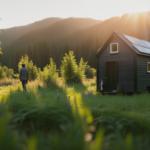Beginners Guides
Free Tiny House For Someone Who Will Live In It
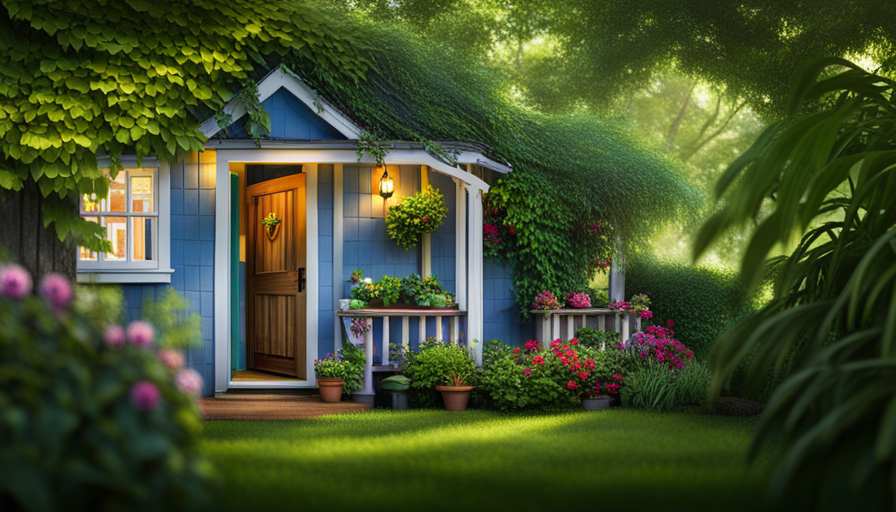
Do you find yourself exhausted by the continuous cycle of paying rent, dealing with mortgage loans, and managing the responsibilities of a large house? Envision a world in which you can dwell without the obligations of a mortgage, incur minimal expenses, and yet relish the comforts of a snug and efficient living area.
Well, I have some exciting news for you! A unique opportunity has arisen for someone like me who is ready to embrace the simplicity and freedom of tiny house living. A free tiny house is up for grabs, and all you have to do is commit to living in it.
This incredible offer not only provides a chance to experience the benefits of minimalistic living but also grants you the opportunity to join a thriving community of like-minded individuals. So, join me as we explore the qualifications, features, and challenges associated with this one-of-a-kind opportunity.
Get ready to embark on an extraordinary journey towards a more sustainable and fulfilling lifestyle in your very own free tiny house!
Key Takeaways
- Qualifications for obtaining the free tiny house: low income or facing homelessness, minimum 2-year commitment, application process
- Benefits of minimalistic living: decluttering, reducing stress, increasing well-being
- Eco-friendly living: smaller carbon footprint, promoting recycling and reducing water consumption
- Features of the tiny house: energy-efficient appliances, smart storage solutions, sustainable materials, solar power system
The Benefits of Living in a Tiny House
Living in a tiny house brings a sense of freedom and simplicity, allowing me to focus on the things that truly matter in life. One of the key benefits of minimalism is the ability to declutter and live with only the essentials. By downsizing, I’m able to reduce the amount of stuff I own, which in turn reduces stress and increases overall well-being.
Additionally, living in a tiny house promotes eco-friendly living. These small homes require less energy to heat and cool, resulting in a smaller carbon footprint. They also encourage a more sustainable lifestyle by promoting recycling, composting, and reducing water consumption.
In the next section, I’ll discuss the qualifications to obtain the free tiny house, which will enable others to experience the benefits of this lifestyle.
How to Qualify for the Free Tiny House
Imagine if you could simply meet the qualifications and make this cozy little abode your own. To qualify for the free tiny house, there are certain criteria that need to be met. Firstly, you must demonstrate a genuine need for affordable housing, such as living on a low income or facing homelessness. Secondly, you should be willing to commit to living in the tiny house for a specified period, usually a minimum of 2 years. Lastly, you must complete an application process, which typically involves providing personal and financial information, references, and a statement of intent. To better understand the qualifications, refer to the table below:
| Qualifying Criteria | Description |
|---|---|
| Genuine Need for Affordable Housing | Demonstrated low income or facing homelessness |
| Length of Commitment | Minimum 2 years |
| Application Process | Provide personal and financial information, references, and statement of intent |
Now that you know the qualifying criteria and application process, let’s explore the features and design of the tiny house.
The Features and Design of the Tiny House
Get ready to be captivated by the incredible features and innovative design of this cozy abode. The tiny house is packed with impressive features that maximize both comfort and sustainability.
Here are some highlights:
-
Energy-efficient appliances: The kitchen is equipped with state-of-the-art, energy-saving appliances that ensure minimal electricity usage without compromising functionality.
-
Smart storage solutions: Cleverly designed storage spaces make the most out of every inch available. From hidden compartments to multi-purpose furniture, there’s a place for everything, keeping the tiny house clutter-free.
-
Sustainable materials: The house is built using eco-friendly materials such as reclaimed wood, recycled insulation, and low VOC paints, reducing its environmental impact.
-
Solar power system: The tiny house is powered by solar panels, providing clean and renewable energy, allowing you to live off the grid and reduce your carbon footprint.
With these features, adjusting to life in a tiny house becomes a seamless transition.
Adjusting to Life in a Tiny House
Prepare yourself for a life of simplicity and mindful living as you embrace the challenges and rewards of residing in your very own compact sanctuary. Adjusting to small spaces may seem daunting at first, but with careful planning and organization, you can make the most of every square inch in your tiny house.
Maximize storage by utilizing vertical space with shelves and hooks, and investing in multi-purpose furniture that doubles as storage units. Consider using collapsible or foldable items that can be easily stored away when not in use.
Additionally, creating designated areas for different activities, such as a workspace or a relaxation corner, can help create a sense of structure and maximize efficiency in your small living space.
Transitioning into the subsequent section about overcoming challenges of tiny house living, let’s explore how to navigate limited resources and maintain a sustainable lifestyle.
Overcoming Challenges of Tiny House Living
Although it may be challenging, many individuals who embrace tiny house living report feeling a sense of fulfillment and contentment in their simplified lifestyle, with 85% of tiny house dwellers stating that they feel happier and more satisfied with their lives.
However, living in a tiny house does come with its fair share of challenges. One common challenge is limited space, requiring careful organization and creative storage solutions. Another challenge is adjusting to a smaller environmental footprint, which may involve learning to conserve resources and reduce waste. Additionally, living in close quarters can test relationships and require open communication and compromise.
To overcome these challenges, it is important to prioritize organization, be willing to simplify possessions, and maintain a positive mindset. By embracing the benefits and finding solutions to the challenges, living in a tiny house can be a rewarding and fulfilling experience.
Transitioning into the subsequent section about ‘joining the tiny house community,’ it is important to connect with others who share similar experiences and can provide support and advice along the journey.
Joining the Tiny House Community
Connecting with like-minded individuals who have embraced the tiny house lifestyle can offer valuable support, guidance, and a sense of belonging. Joining the tiny house community provides a platform to share experiences and learn from others who’ve already navigated the pros and cons of tiny house living.
Here are three tips for downsizing and decluttering before moving into a tiny house:
-
Start early: Begin the downsizing process well in advance to allow ample time for making difficult decisions about what to keep and what to let go.
-
Prioritize essentials: Identify the items that are truly necessary and bring you joy. Let go of excess belongings that may only clutter your tiny space.
-
Utilize storage solutions: Maximize your storage options by using creative solutions such as under-bed storage, wall-mounted shelves, and multi-functional furniture.
By connecting with the tiny house community, you can gain insights on downsizing and decluttering, making the most of your free tiny house experience.
Making the Most of Your Free Tiny House Experience
When it comes to creating a personalized and cozy home in a free tiny house, I believe that the key is to make the most of the limited space available. By carefully selecting furniture, decor, and storage solutions that reflect your style and preferences, you can transform your tiny house into a warm and inviting space.
Additionally, embracing the freedom and flexibility of tiny living allows you to live a more intentional and minimalist lifestyle, focusing on what truly matters to you. This can lead to a sense of liberation and contentment as you prioritize experiences over material possessions.
Finally, by achieving financial independence through living in a free tiny house, you have the opportunity to pursue your passions and dedicate your time and resources to the things that bring you joy and fulfillment. Whether it’s starting a small business, traveling, or engaging in creative pursuits, the financial freedom that comes with tiny living opens up a world of possibilities.
Creating a Personalized and Cozy Home
To truly make this tiny house your own, you’ll want to infuse it with your unique personality, creating a cozy home that feels like a warm embrace from your favorite book. Personalizing the space is essential in maximizing storage and creating a sense of comfort.
Start by decluttering and organizing your belongings, utilizing clever storage solutions such as under-bed storage, wall-mounted shelves, and multi-functional furniture. Consider incorporating your favorite colors, patterns, and textures through curtains, rugs, throw pillows, and artwork.
Adding personal touches like family photos, cherished mementos, or handmade decorations can also create a sense of warmth and nostalgia. By customizing your tiny house to reflect your individual style, you’ll be able to fully embrace the freedom and flexibility of tiny living, making every moment in your cozy abode truly special.
Embracing the Freedom and Flexibility of Tiny Living
Embrace the incredible freedom and flexibility of living in a compact space that allows you to truly appreciate life’s simple pleasures. Adopting a minimalist lifestyle in a tiny house offers numerous benefits, including the opportunity to downsize and simplify your life.
By living in a smaller space, you’re forced to carefully consider what possessions are truly essential, leading to a more intentional and clutter-free existence. Downsizing not only reduces stress and increases efficiency, but it also allows for financial savings as you eliminate unnecessary expenses.
With fewer bills and less space to maintain, you can redirect your resources towards achieving financial independence and pursuing your passions.
Transitioning into the next section, let’s explore how living in a tiny house can enable you to take control of your finances and prioritize what truly matters in life.
Achieving Financial Independence and Pursuing Your Passions
Immerse yourself in the liberating world of financial independence and unlock the door to pursuing your passions as you navigate the boundless possibilities that come with living in a compact space.
Achieving financial independence through tiny living allows you to break free from the shackles of mortgage payments and excessive expenses. By reducing your living costs, you can redirect your financial resources towards the things that truly matter to you.
Whether it’s starting your own business, traveling the world, or dedicating more time to a hobby, the financial freedom afforded by tiny living empowers you to pursue your passions without the constraints of traditional living arrangements.
Embrace the opportunity to live a simpler, more intentional life, and open yourself up to a world of endless possibilities.
Frequently Asked Questions
What is the square footage of the free tiny house?
The square footage of the tiny house is determined by its dimensions, which refer to its length, width, and height. To accurately calculate the square footage, measure the length and multiply it by the width.
For instance, if the tiny house is 10 feet long and 8 feet wide, the square footage would be 80 square feet. This method ensures an accurate representation of the living space available in the tiny house.
Are pets allowed in the free tiny house?
Pets are allowed in the tiny house, as long as they comply with the accommodation regulations set for the property. These regulations ensure the safety and well-being of both the pets and the occupants.
Specific guidelines may include restrictions on the number and size of pets, as well as requirements for vaccinations and proper waste disposal. These regulations aim to maintain a clean and comfortable living environment for everyone residing in the tiny house.
Can the free tiny house be moved to a different location?
Moving the free tiny house to a different location is indeed possible. The transportation requirements for relocating the house are fairly straightforward. You would need a suitable trailer hitched to a vehicle with sufficient towing capacity. Ensure the house is properly secured to the trailer to prevent any damage during transportation.
It’s important to plan the route carefully, considering any height or width restrictions. Overall, with the right equipment and precautions, moving the free tiny house can be successfully accomplished.
(Rhetorical Device: Alliteration – ‘properly secured to the trailer’)
Is there a time limit for how long the free tiny house can be lived in?
The time limit for residency in the free tiny house is subject to the eligibility criteria set by the provider. These criteria may include factors such as the purpose of the program, duration of support, and individual circumstances.
It’s essential to review the specific guidelines and requirements established by the provider to determine the length of time one can live in the tiny house.
Are there any restrictions on modifications or renovations to the free tiny house?
Hey folks, let’s talk about the restrictions on modifications and renovations to the free tiny house.
Now, I know what you’re thinking, ‘What’s the catch?’ Well, here’s the deal. While you have the freedom to personalize your new humble abode, there are a few limitations.
Structural changes that compromise the integrity of the house are a no-go. Additionally, any alterations that violate local building codes or regulations are off-limits. But hey, don’t fret, you still have plenty of room to make this tiny house your own!
Conclusion
In conclusion, living in a free tiny house is like discovering a hidden treasure chest filled with endless possibilities. It allows you to break free from the constraints of a traditional home, embracing a simpler, more sustainable lifestyle.
By downsizing and focusing on what truly matters, you can unlock a world of freedom and creativity. Although challenges may arise, the tight-knit community and clever design features make overcoming them an adventure.
So, seize this opportunity and embark on an exciting journey towards a life of minimalism and boundless joy.
Hi, I’m Emma. I’m the Editor in Chief of Tiny House 43, a blog all about tiny houses. While tree houses are often associated with childhood, they can be the perfect adult retreat. They offer a cozy space to relax and unwind, surrounded by nature. And since they’re typically built on stilts or raised platforms, they offer stunning views that traditional homes simply can’t match. If you’re looking for a unique and romantic getaway, a tree house tiny house might just be the perfect option.
Beginners Guides
How Do I Get Rid of Tiny Flies in My House
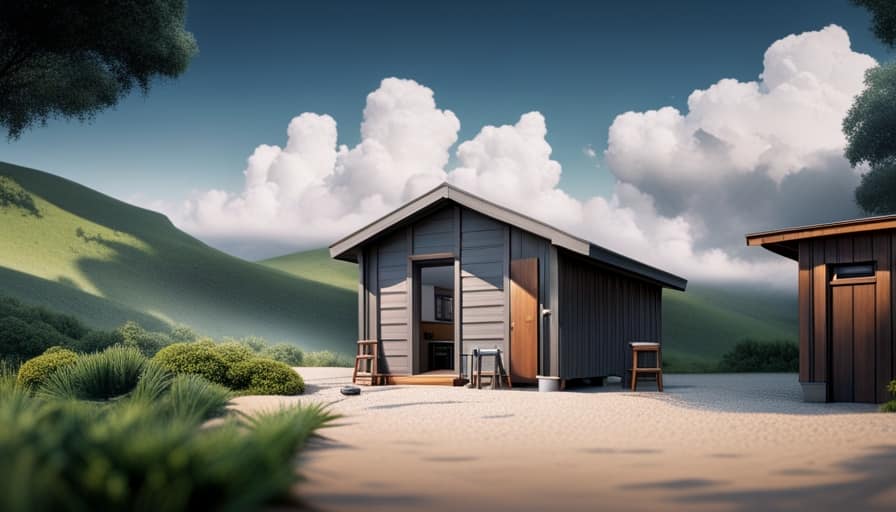
Recently, I have been bothered by these annoying little flies in my home, and I must say, they are really starting to get on my nerves!
But fear not, because I’ve done my research and I’m here to share some expert tips on how to get rid of those tiny flies once and for all.
From identifying the different types of flies to using natural remedies and chemical solutions, I’ve got you covered.
So let’s dive in and bid farewell to these unwanted guests together!
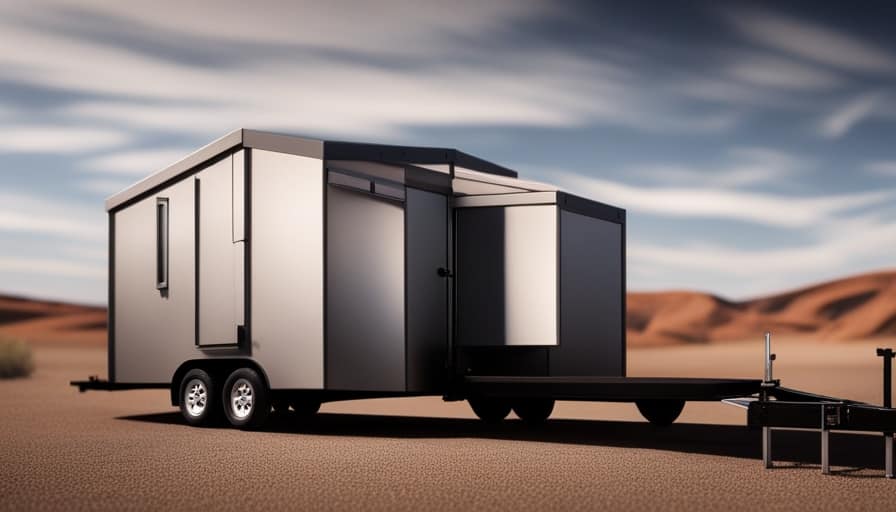
Key Takeaways
- Identifying the common types of tiny flies in your house is important for effective pest control.
- Tiny flies are attracted to moist and decaying organic matter, such as overripe fruits and rotting vegetables.
- Natural remedies, such as vinegar and dish soap solutions, can be used to eliminate tiny flies from your house.
- Preventing future infestations of tiny flies involves maintaining a clean environment, sealing cracks or openings, and storing perishable items properly.
Identifying the Common Types of Tiny Flies in Your House
I can easily identify the common types of tiny flies in my house by observing their physical characteristics and behavior. Flies are attracted to our homes for various reasons, including the presence of food, moisture, and waste. It’s important to note that these flies can pose health risks, as they can carry and spread disease-causing organisms.
To identify the types of flies, I first look at their size and color. For instance, fruit flies are small and have a tan or brown color. Drain flies, on the other hand, are gray or black and have a fuzzy appearance.
Understanding the Reasons Why Tiny Flies Infest Your Home
To understand why tiny flies infest your home, it’s important to consider their attraction to certain conditions and factors within your living space.
These flies, commonly known as fruit flies or drain flies, are attracted to moist and decaying organic matter. They seek out common breeding grounds such as overripe fruits, rotting vegetables, and damp areas in your kitchen or bathroom.
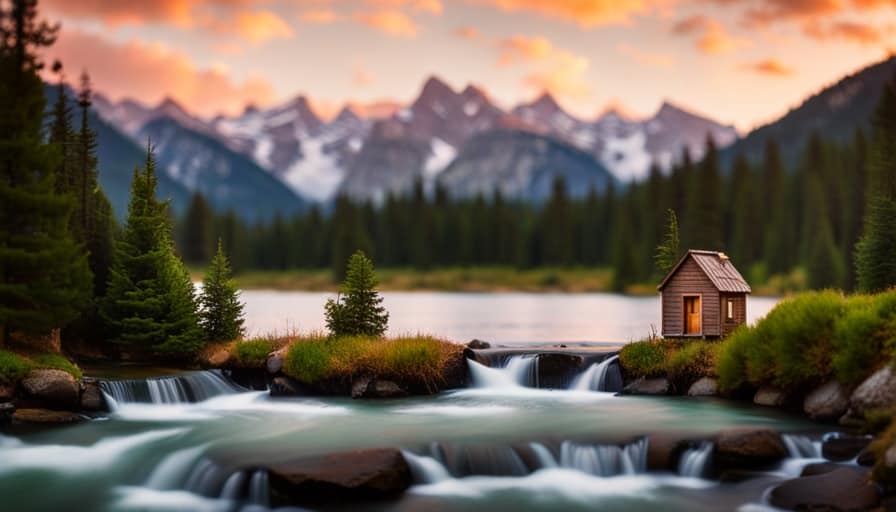
These tiny flies are also drawn to standing water in sinks, drains, and garbage disposals. Signs of a fly infestation include the presence of numerous flies hovering around these areas, as well as the sighting of their larvae or pupae.
It’s crucial to address these conditions and remove any potential breeding grounds to effectively eliminate the infestation and prevent future occurrences.
Natural Remedies to Eliminate Tiny Flies From Your House
One effective way to eliminate tiny flies from your house is by using a combination of vinegar and dish soap. This homemade vinegar fly spray is a non-toxic and practical solution to get rid of those pesky insects.
Here’s how you can make it:
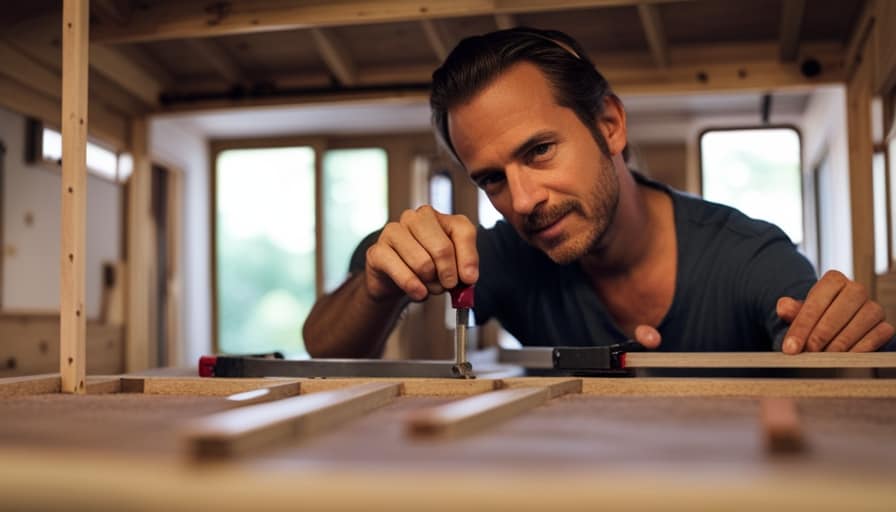
- Mix equal parts of vinegar and water in a spray bottle.
- Add a few drops of dish soap to the mixture. The soap helps to break the surface tension of the liquid, making it easier for the flies to drown.
- Shake the bottle gently to ensure the ingredients are well combined.
- Spray the solution directly onto the flies or in areas where they’re commonly found, such as near windows or fruit bowls.
This natural fly spray isn’t only effective but also safe for your family and pets. It traps and kills the flies without the use of harmful chemicals.
Give it a try and say goodbye to those tiny flies in your house!
Using Chemical Solutions to Get Rid of Tiny Flies in Your Home
Bleach is a strong and effective chemical solution that can help eliminate tiny flies in your home. Chemical solutions, such as bleach, can be highly effective in eliminating tiny flies. The strong properties of bleach make it a powerful tool for killing flies and destroying their breeding grounds. However, it’s important to use caution when using chemical solutions, as they can be harmful to humans and pets if not used properly.
When comparing chemical solutions to natural remedies for getting rid of tiny flies in your house, it’s important to consider their effectiveness.
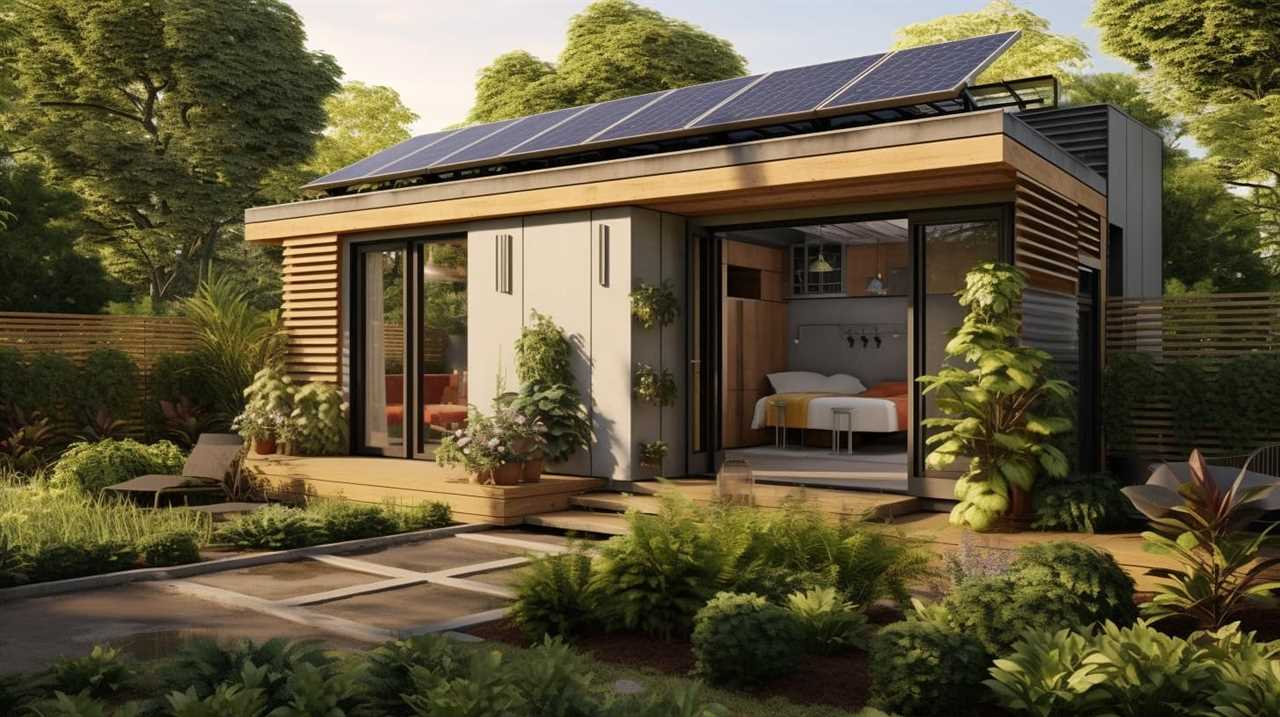
In the next section, we’ll discuss methods for preventing future infestations of tiny flies in your house.
Preventing Future Infestations of Tiny Flies in Your House
I can take steps to prevent future infestations of tiny flies in my house by implementing proper sanitation practices. By maintaining a clean environment, I can greatly reduce the chances of reinfestation. Here are three key practices to incorporate:
-
Regularly clean and sanitize all areas of the house, especially the kitchen and garbage disposal areas. Empty and clean trash cans frequently to prevent any organic matter from attracting flies.
-
Seal any cracks or openings in doors, windows, and screens to prevent flies from entering the house. Repair any damaged screens to ensure they’re intact and functioning properly.
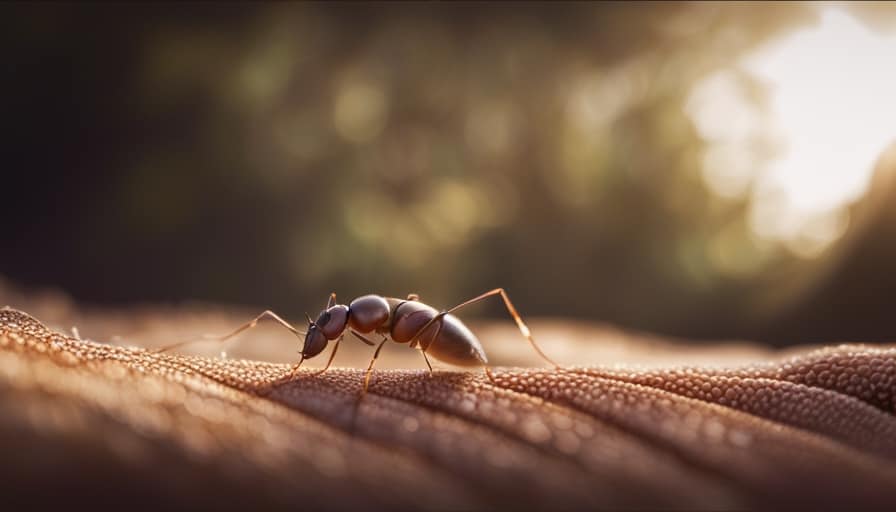
-
Store fruits, vegetables, and other perishable items in sealed containers or in the refrigerator. Flies are attracted to the odors of decaying food, so keeping it properly stored will deter them.
Frequently Asked Questions
How Do Tiny Flies Affect My Health?
Tiny flies can pose health risks, as they can carry bacteria and pathogens that can cause illnesses. To avoid health issues, it’s important to keep your house clean, dispose of trash properly, and eliminate any standing water where they can breed.
Can Tiny Flies Damage My Property?
Tiny flies can indeed cause damage to your property. Their larvae can infest and feed on organic materials, such as wood, causing structural damage over time. It’s important to address the issue promptly to prevent further harm.
Are Tiny Flies Attracted to Specific Food Sources?
Tiny flies are often attracted to specific food sources, such as overripe fruits or decaying organic matter. Understanding their breeding habits and implementing effective prevention methods, like proper sanitation and sealing entry points, can help keep them out of the house.
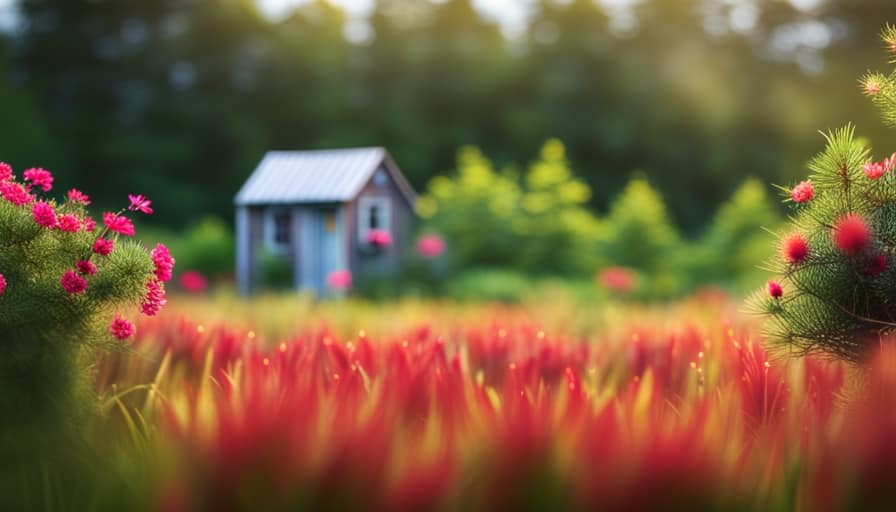
How Long Does It Take for Natural Remedies to Eliminate Tiny Flies?
In my experience, the speed of effectiveness of natural remedies versus chemical solutions for eliminating tiny flies can vary. While some natural remedies may work quickly, others may take longer to fully eliminate the flies. It’s important to be patient and consistent in your efforts.
Are There Any Long-Term Effects of Using Chemical Solutions to Get Rid of Tiny Flies?
Using chemical solutions to eliminate tiny flies in your house can have long-term environmental impacts. Consider using alternative methods like natural remedies or traps that are safer and more sustainable for the ecosystem.
Conclusion
In conclusion, it’s evident that tiny flies can be a nuisance in our homes. By understanding their types and reasons for infestation, we can effectively eliminate them using natural remedies or chemical solutions.
However, it’s crucial to prevent future infestations by maintaining cleanliness and proper waste management. Rest assured, with the right knowledge and approach, you can bid farewell to these pesky insects and enjoy a fly-free home environment.
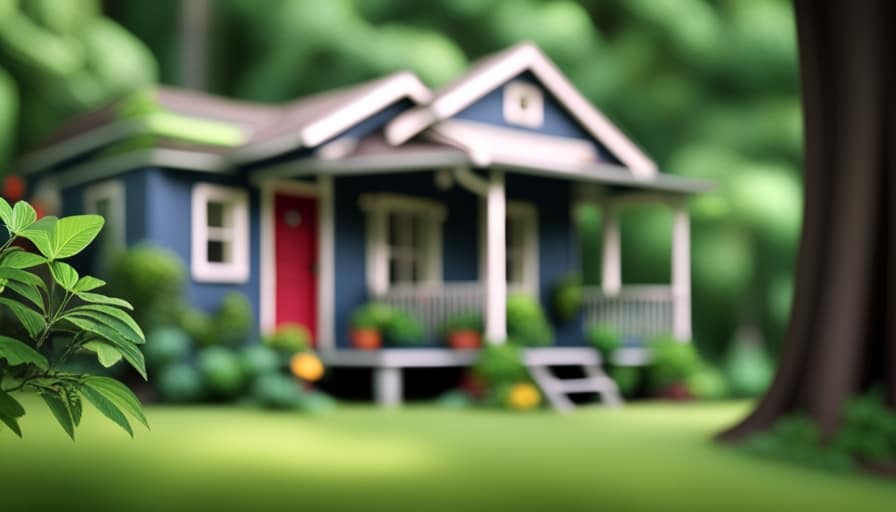
I’m Theodore, and I love tiny houses. In fact, I’m the author of Tiny House 43, a book about tiny houses that are also tree houses. I think they’re magical places where imaginations can run wild and adventures are just waiting to happen.
While tree houses are often associated with childhood, they can be the perfect adult retreat. They offer a cozy space to relax and unwind, surrounded by nature. And since they’re typically built on stilts or raised platforms, they offer stunning views that traditional homes simply can’t match.
If you’re looking for a unique and romantic getaway, a tree house tiny house might just be the perfect option.
Beginners Guides
How Do I Get Rid of Tiny Ants in My House

- Health risks: Are there any potential diseases that can be transmitted by ants in the house?
- Prevention methods: What are some effective ways to keep ants out of the house to avoid any health risks?
I have been dealing with these stubborn small ants in my home, and I’m sure you can empathize. It seems like I am stuck in an endless game of hide-and-seek with these little creatures.
But fear not, because I’ve done my research and I’m here to share some tried and true methods to get rid of them for good. From natural remedies to chemical solutions, I’ve got you covered.
So let’s roll up our sleeves and say goodbye to those pesky ants together!
Key Takeaways
- Identifying the type of ants in your house is important in order to effectively address the infestation issue.
- Understanding the behavior and nesting habits of tiny ants is essential in finding and eliminating their colonies.
- Natural remedies such as vinegar and water solution, essential oils, and cinnamon can help repel and eliminate tiny ants.
- If natural remedies don’t work, consider using chemical solutions or seeking professional pest control services for a safer and more comprehensive approach.
Identifying the Type of Ants in Your House
I personally find it helpful to identify the type of ants in my house by observing their behavior and physical features. Distinguishing characteristics play a crucial role in determining the species of ants present.
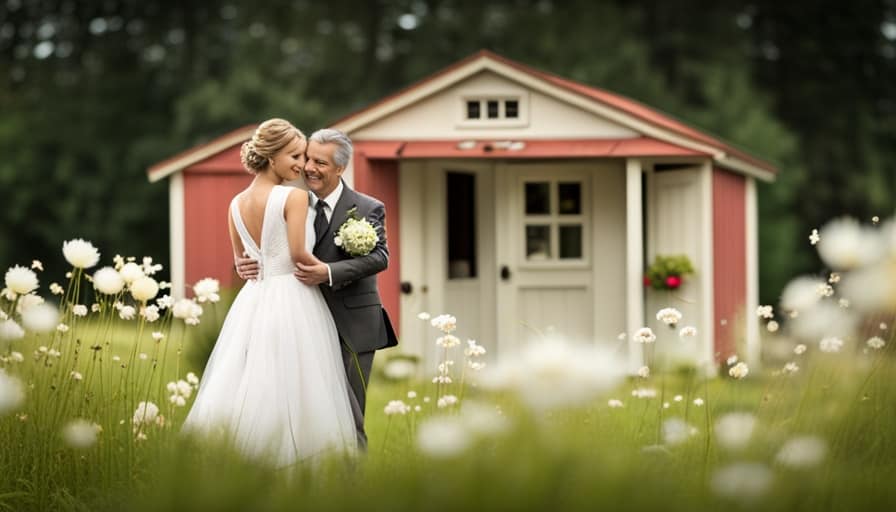
Some common types of household ants include pavement ants, odorous house ants, and pharaoh ants. Pavement ants are dark brown or black with parallel grooves on their heads and thoraxes. Odorous house ants emit a distinct odor when crushed, often described as a rotten coconut smell. Pharaoh ants are light yellow to reddish-brown and have two distinct nodes on their petioles.
In terms of common habitats, ants can be found in various areas of the house, including kitchens, bathrooms, and around food sources. Understanding the behavior and nesting habits of tiny ants is essential in effectively addressing the infestation issue.
Understanding the Behavior and Nesting Habits of Tiny Ants
There are several key factors to consider when understanding the behavior and nesting habits of tiny ants in your house.
These tiny creatures are social insects, living in colonies that can range from a few dozen to thousands of individuals. They communicate and cooperate through chemical signals and pheromones, which helps them locate food sources and establish trails.

When it comes to nesting, tiny ants can build their colonies in various locations, such as in wall voids, under floors, or even in potted plants. Understanding their nesting habits is crucial in effectively eliminating them from your house.
It’s important to note that while ants can be a nuisance indoors, they play a vital role in the ecosystem, helping to decompose organic matter and control other insect populations. However, their presence in food storage areas can contaminate and spoil food, making it necessary to address their infestation promptly and safely.
Natural Remedies to Get Rid of Tiny Ants in Your House
One effective natural remedy to eliminate tiny ants in your house is using a vinegar and water solution. Vinegar, with its strong odor, disrupts their scent trails and confuses them, making it difficult for them to navigate. To create the solution, mix equal parts of white vinegar and water in a spray bottle. Then, simply spray the solution directly onto the ants or their entry points.
Another natural remedy is using essential oils, such as peppermint, lemon, or tea tree oil. These oils have strong scents that repel ants. Mix a few drops of your chosen essential oil with water and spray it in areas where ants are present.
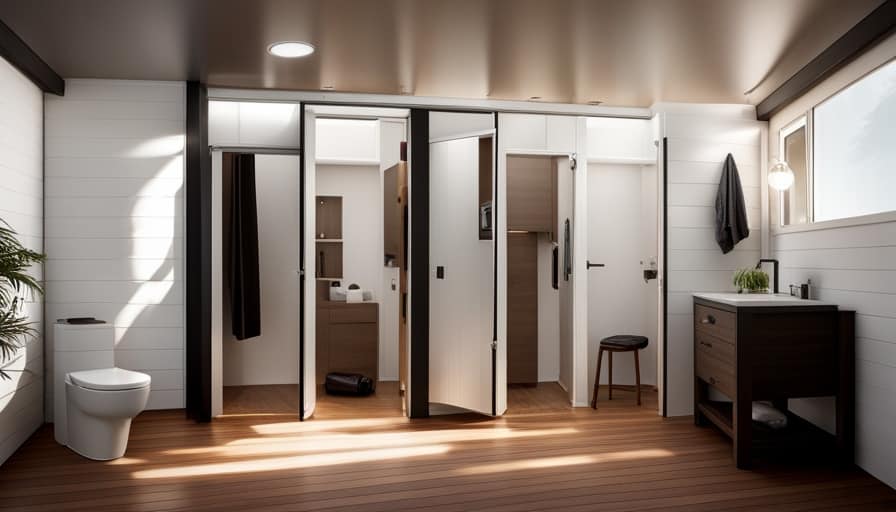
These natural remedies provide an eco-friendly and safe way to get rid of tiny ants in your house. However, if these methods don’t work, it may be necessary to consider chemical solutions for eliminating tiny ants.
Chemical Solutions for Eliminating Tiny Ants
If you’re dealing with a persistent infestation of tiny ants in your house, using insecticide sprays can be an effective solution to eliminate them. However, it is important to consider non-toxic alternatives and professional pest control services for a safer and more comprehensive approach.
| Chemical Solution | How it Works | Pros | Cons |
|---|---|---|---|
| Insecticide sprays | Kills ants on contact | – Easy to use – Widely available – Immediate results |
– Chemical exposure – Harmful to pets and children – Potential environmental impact |
While insecticide sprays can quickly kill ants, they may pose risks to your health and the environment. If you prefer non-toxic alternatives, consider using natural repellents like vinegar, lemon juice, or essential oils. These substances are less harmful and can help deter ants from entering your home.
Another option is to hire professional pest control services. They have the expertise and specialized equipment to effectively eliminate ant infestations. Professionals can also assess the extent of the problem and provide long-term solutions to prevent future infestations.
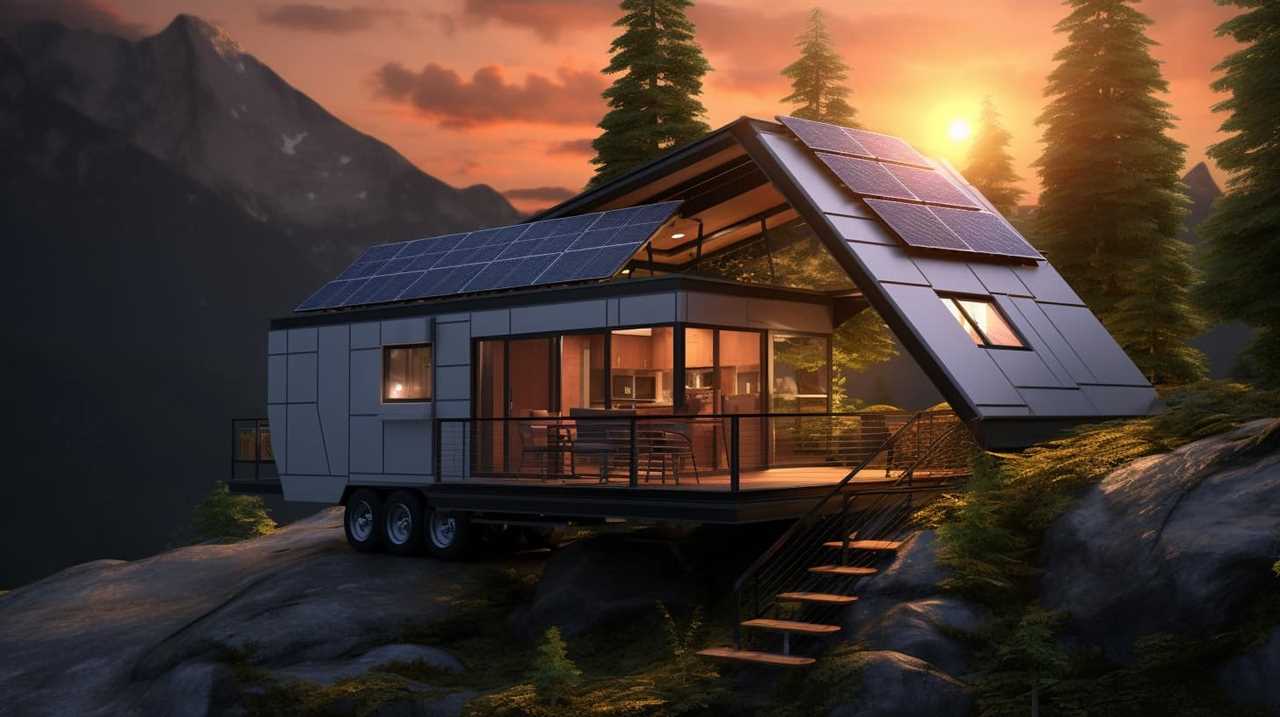
Preventing Future Infestations: Tips and Tricks
When I encountered a persistent infestation of tiny ants in my house, I took proactive steps to prevent future infestations. Here are some effective ant proofing techniques for your home and long-term strategies for keeping ants out:
-
Seal cracks and crevices: Inspect your house for any openings where ants can enter, such as gaps around doors, windows, and pipes. Use caulk or weatherstripping to seal these entry points.
-
Keep your house clean: Clean up food and drink spills promptly, and store food in airtight containers. Wipe down countertops and sweep floors regularly to remove any crumbs or residue that may attract ants.
-
Remove potential ant habitats: Trim back vegetation that’s in contact with your house, as ants can use it as a bridge to enter. Also, keep firewood and other outdoor items away from the foundation.
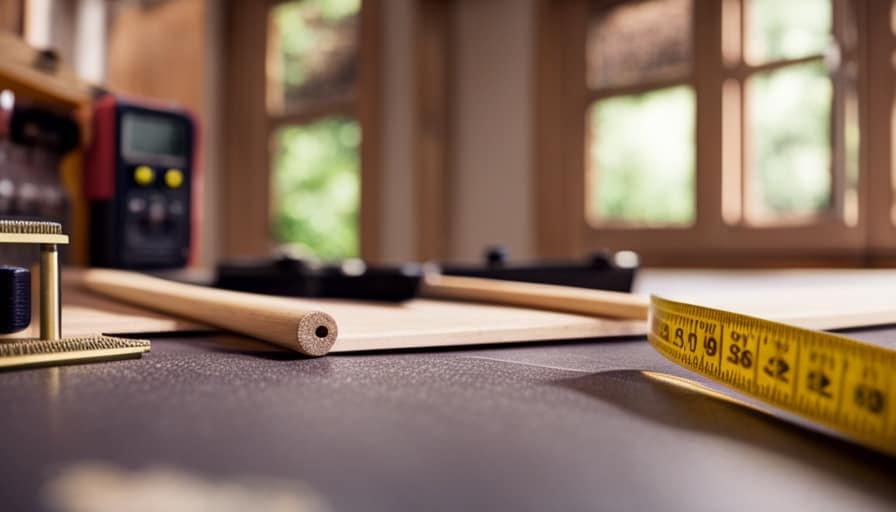
-
Use natural deterrents: Certain scents like peppermint, cinnamon, and vinegar can repel ants. Spray these substances around entry points or wipe down surfaces to discourage ants from entering.
Frequently Asked Questions
How Do I Get Rid of Ants in My Garden?
To get rid of ants in my garden, I use organic pest control methods and natural ant repellents. These methods are effective in keeping ants away and maintaining a healthy garden environment.
Can I Use Vinegar to Kill Ants?
Yes, vinegar can be used to kill ants. However, there are also other natural ant repellents that you can consider using as alternatives to vinegar.
What Should I Do if I Have a Severe Ant Infestation?
If I have a severe ant infestation, I would first focus on prevention tips such as sealing entry points and removing food sources. If the problem persists, I would consider professional ant extermination options for effective and long-lasting results.

Are There Any Health Risks Associated With Ants in the House?
There are potential health risks associated with ants in the house. They can contaminate food, spread bacteria, and even cause allergies. It’s important to take preventive measures to avoid these risks.
Can I Use Essential Oils to Repel Ants?
I find that using essential oils for ant control can be effective. However, it’s important to consider the pros and cons of natural ant repellents. While they are safe and eco-friendly, they may not be as potent as chemical options.
Conclusion
In conclusion, by identifying the type of ants in your house, understanding their behaviors and nesting habits, and implementing natural or chemical remedies, you can effectively get rid of tiny ants.
However, prevention is key to avoiding future infestations. Just as a fortress protects its kingdom from invaders, taking proactive measures will safeguard your home from these pesky pests.
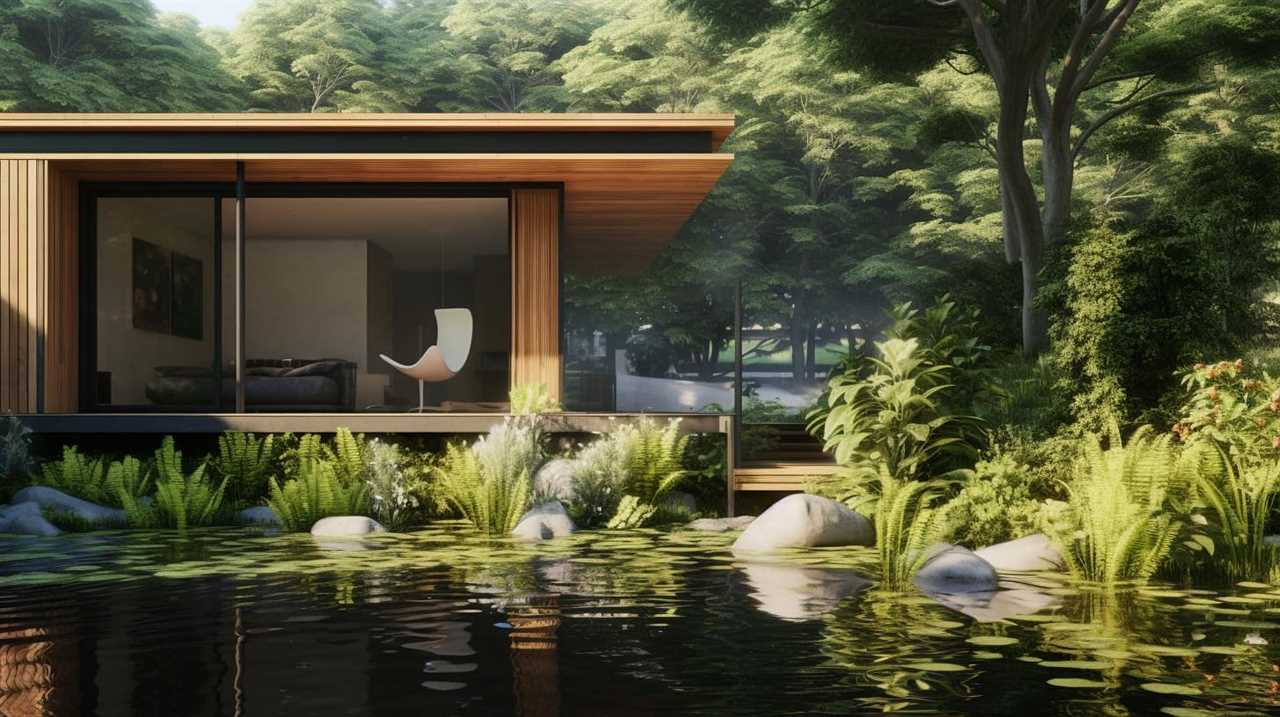
Stay vigilant and maintain cleanliness to ensure a ant-free environment.
I’m Theodore, and I love tiny houses. In fact, I’m the author of Tiny House 43, a book about tiny houses that are also tree houses. I think they’re magical places where imaginations can run wild and adventures are just waiting to happen.
While tree houses are often associated with childhood, they can be the perfect adult retreat. They offer a cozy space to relax and unwind, surrounded by nature. And since they’re typically built on stilts or raised platforms, they offer stunning views that traditional homes simply can’t match.
If you’re looking for a unique and romantic getaway, a tree house tiny house might just be the perfect option.
Beginners Guides
How Cheap Can You Build a Tiny House

Constructing a small house is akin to figuring out a puzzle – it can be difficult, but the payoff is valuable. As someone who enjoys discovering inventive answers, I sympathize with the longing to create a gorgeous home without breaking the bank.
In this article, we’ll explore the factors that affect the cost of building a tiny house and discover budget-friendly materials and labor-saving strategies. Join me on this journey to uncover just how cheap you can build your dream tiny house.
Key Takeaways
- Choosing the right location in a rural area with lower land prices and fewer building restrictions can significantly affect the cost of building a tiny house.
- Using alternative building methods such as reclaimed materials or repurposed items can help reduce costs.
- Implementing cost-saving techniques and building on a budget are important factors in building a cheap tiny house.
- Utilizing budget-friendly building materials, such as affordable insulation options and low-cost flooring alternatives, can also contribute to building a cheap tiny house.
Factors Affecting the Cost of Building a Tiny House
What are the factors that affect the cost of building a tiny house?
When it comes to building a tiny house on a budget, there are several cost-saving techniques and alternative building methods that can significantly impact the overall cost.

One of the main cost-saving techniques is choosing the right location. Building in a rural area with lower land prices and fewer building restrictions can help keep costs down.
Another factor that affects the cost is the size and design of the tiny house. The simpler the design, the more cost-effective it will be.
Additionally, using alternative building methods such as reclaimed materials or repurposed items can also help reduce costs.
By considering these factors and implementing cost-saving techniques, it’s possible to build a tiny house on a budget.
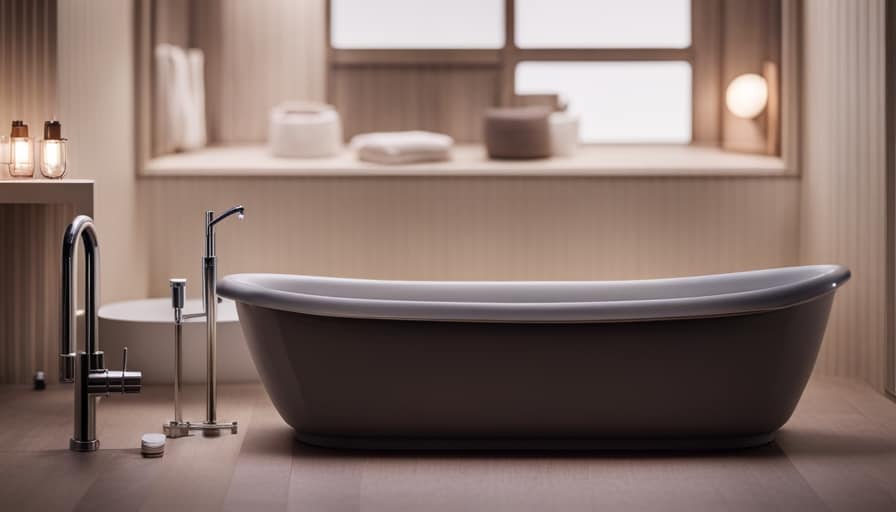
Transitioning into the subsequent section about budget-friendly tiny house building materials, let’s explore how the choice of materials can further impact the overall cost.
Budget-Friendly Tiny House Building Materials
When it comes to building a tiny house on a budget, I can find affordable building materials that will help keep costs down. One area where I can save money is by choosing affordable insulation options. Instead of expensive spray foam insulation, I can opt for alternatives such as fiberglass batts or rigid foam boards. These options are cost-effective and still provide good insulation for the tiny house. Additionally, I can consider low-cost flooring alternatives to save money. Instead of hardwood or tile, I can use vinyl plank flooring or laminate flooring, which are both affordable and durable. By making smart choices when it comes to insulation and flooring, I can build a budget-friendly tiny house without compromising on quality.
| Affordable Insulation Options | Low Cost Flooring Alternatives |
|---|---|
| Fiberglass batts | Vinyl plank flooring |
| Rigid foam boards | Laminate flooring |
Strategies for Saving Money on Tiny House Design
To save money on my tiny house design, I can employ cost-saving strategies such as utilizing multipurpose furniture and maximizing storage space. By incorporating cost-effective design options and implementing DIY tiny house building techniques, I can create a functional and affordable living space.
One key strategy is to choose furniture that serves multiple purposes, such as a sofa that can be converted into a bed or a dining table that can be folded away when not in use. This not only saves money on buying separate pieces of furniture but also maximizes the use of limited space.
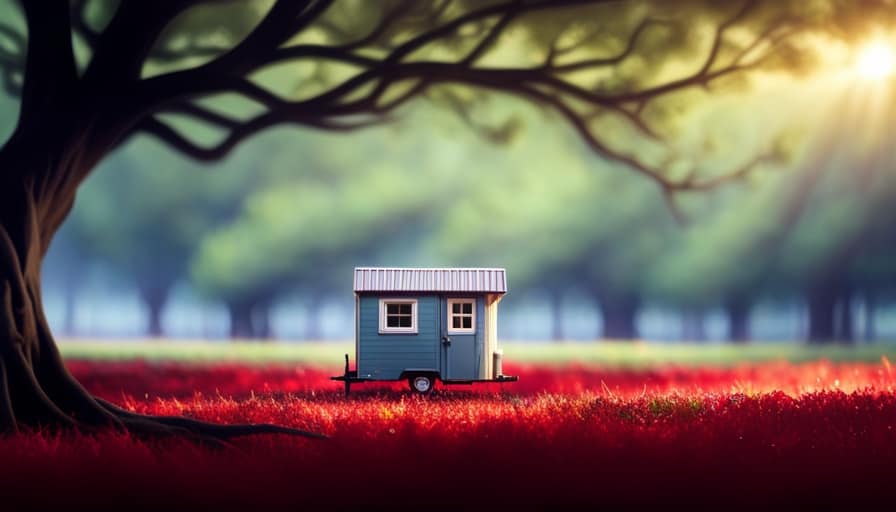
Another cost-saving strategy is to maximize storage space by utilizing built-in shelving, under-bed storage, and wall-mounted organizers. This eliminates the need for additional storage furniture and keeps the space clutter-free.
Creative Ways to Reduce Labor Costs in Tiny House Construction
I can significantly reduce labor costs in tiny house construction by hiring a small team of skilled workers instead of a large crew. This approach allows for effective coordination and streamlined communication, resulting in increased efficiency and reduced labor hours.
Here are some creative ways to further reduce labor costs in tiny house construction:
-
Utilize DIY construction techniques: Encourage the use of DIY construction techniques, where homeowners can actively participate in the building process. This not only reduces labor costs but also creates a sense of ownership and satisfaction.
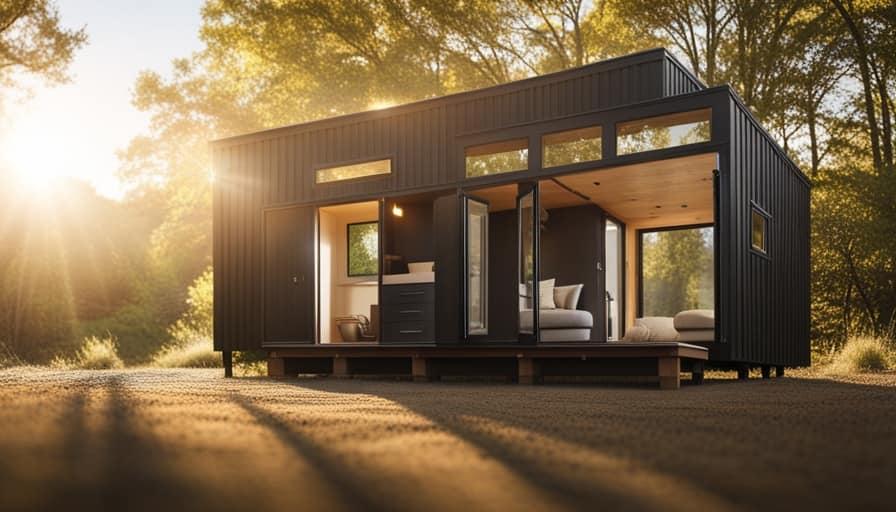
-
Incorporate alternative energy sources: Explore the use of alternative energy sources such as solar panels or wind turbines. By integrating these systems during the construction phase, you can avoid additional labor costs associated with retrofitting.
-
Optimize material usage: Carefully plan and optimize the use of materials to minimize waste. This can be achieved by accurately measuring and cutting materials, as well as repurposing leftover materials for other parts of the project.
-
Prioritize efficient design: Focus on designing a space that maximizes functionality and minimizes unnecessary labor-intensive features. This includes thoughtful space planning, utilizing multipurpose furniture, and incorporating efficient storage solutions.
Implementing these strategies won’t only help reduce labor costs but also contribute to a sustainable and budget-friendly tiny house construction process.
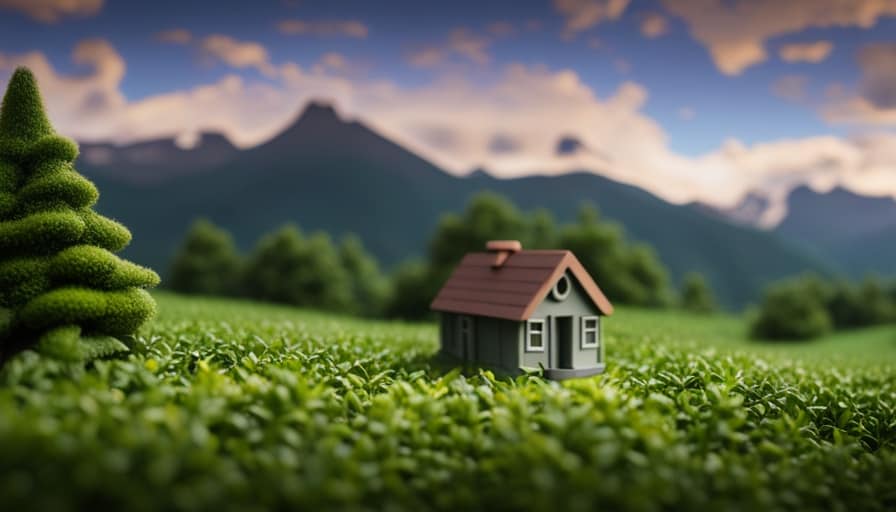
Tips for Finding Affordable Land for Your Tiny House
By researching online listings and networking with local real estate agents, I can easily find affordable land for my tiny house. It is important to explore alternative financing options for purchasing land for a tiny house to keep costs low. One option is owner financing, where the seller acts as the lender and allows you to make monthly payments instead of obtaining a traditional mortgage. Another option is crowdfunding, where you can raise funds from a community of supporters who believe in your tiny house project. Additionally, negotiating with local municipalities for reduced fees and regulations for tiny house living can save you money in the long run. Some municipalities may be open to creating special zoning or permitting regulations for tiny houses, making it easier and more affordable to live in them.
| Financing Options | Benefits |
|---|---|
| Owner Financing | Lower interest rates, flexible payment terms |
| Crowdfunding | Community support, no need for traditional loans |
| Negotiating with Local Municipalities | Reduced fees, simplified regulations |
Finding affordable land for your tiny house is a crucial step in building your dream home while staying within your budget. With the right research, networking, and negotiation skills, you can make your tiny house dreams a reality.
Frequently Asked Questions
What Are the Most Common Mistakes to Avoid When Building a Tiny House on a Tight Budget?
Common pitfalls to avoid when building a tiny house on a tight budget include overestimating DIY skills, not researching local codes and regulations, and not budgeting for unexpected expenses. Cost saving tips include using reclaimed materials and prioritizing essential features.
Are There Any Financing Options Available for Building a Tiny House?
Financing options for building a tiny house include personal loans, RV loans, and construction loans. Pros include flexibility, ownership, and the opportunity to live mortgage-free. Cons may include higher interest rates and stricter qualification requirements.
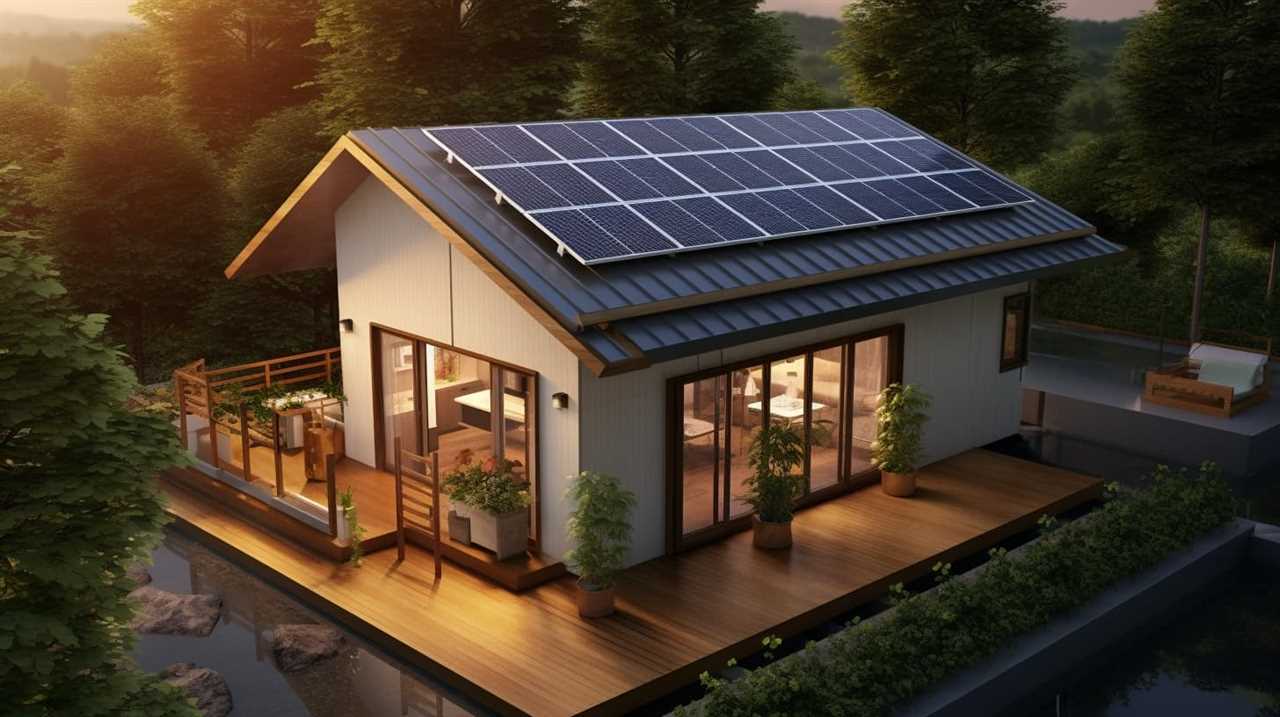
How Much Does It Cost to Maintain a Tiny House on a Yearly Basis?
Maintaining a tiny house on a yearly basis can be cost-effective. By embracing the benefits of living in a tiny house vs. a traditional home and following tips for minimizing maintenance costs, I can save money and enjoy a simpler lifestyle.
Can You Build a Tiny House Using Recycled or Salvaged Materials?
Using recycled and salvaged materials for a tiny house not only saves money, but also gives a sense of purpose and accomplishment. It’s a creative way to build sustainably and reduce waste while creating a unique and personalized home.
Are There Any Legal Restrictions or Regulations to Consider When Finding Land for a Tiny House?
When finding land for a tiny house, it’s important to consider legal restrictions and zoning regulations. Land requirements vary, and financing options may be limited. Maintenance costs can be lower, and eco-friendly building materials are often used.
Conclusion
In conclusion, building a tiny house can be an affordable and cost-effective option for those looking to downsize or live a more minimalist lifestyle. By considering factors such as materials, design strategies, and labor costs, it’s possible to build a tiny house on a tight budget.
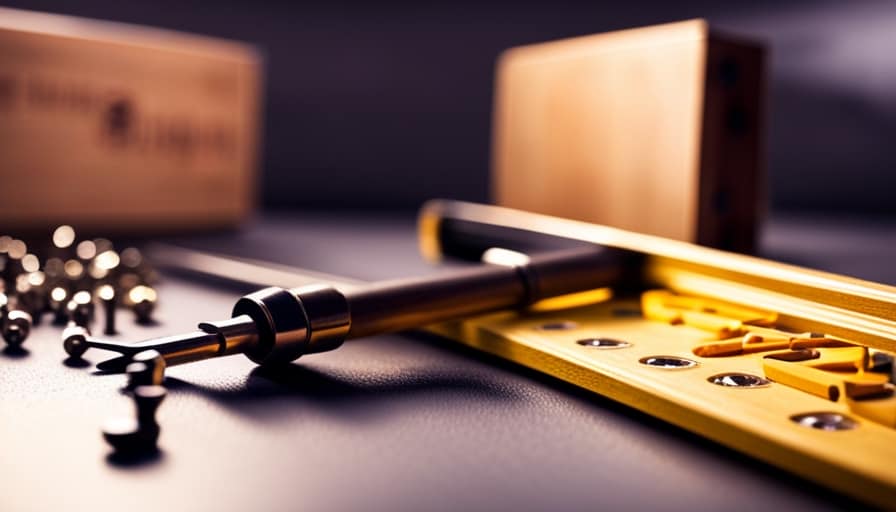
With a little creativity and resourcefulness, you can achieve your dream of owning a tiny house without breaking the bank. So why wait? Start planning and building your own tiny house today!
I’m Theodore, and I love tiny houses. In fact, I’m the author of Tiny House 43, a book about tiny houses that are also tree houses. I think they’re magical places where imaginations can run wild and adventures are just waiting to happen.
While tree houses are often associated with childhood, they can be the perfect adult retreat. They offer a cozy space to relax and unwind, surrounded by nature. And since they’re typically built on stilts or raised platforms, they offer stunning views that traditional homes simply can’t match.
If you’re looking for a unique and romantic getaway, a tree house tiny house might just be the perfect option.
-

 Beginners Guides2 weeks ago
Beginners Guides2 weeks agoHow To Buy A Tesla Tiny House
-

 Energy Efficiency2 months ago
Energy Efficiency2 months agoBest Tiny Homes For Cold Climates
-

 Beginners Guides2 weeks ago
Beginners Guides2 weeks agoTiny House Nation Where Are They Now Stephanie
-

 Tiny House Resources (e.g., legalities, cost, insurance, FAQs)2 months ago
Tiny House Resources (e.g., legalities, cost, insurance, FAQs)2 months agoDo Tiny Homes Need Planning Permission?
-

 Beginners Guides3 weeks ago
Beginners Guides3 weeks agoFrom The Show Tiny House Nation How Many Keep Their Tiny House?
-

 Beginners Guides2 months ago
Beginners Guides2 months agoUsing a Climbing Net For Treehouse Construction
-

 Beginners Guides2 months ago
Beginners Guides2 months agoHow to Build a Treehouse Without Drilling Into the Tree
-

 Beginners Guides3 weeks ago
Beginners Guides3 weeks agoTiny House Nation Who Pays For The Houses






